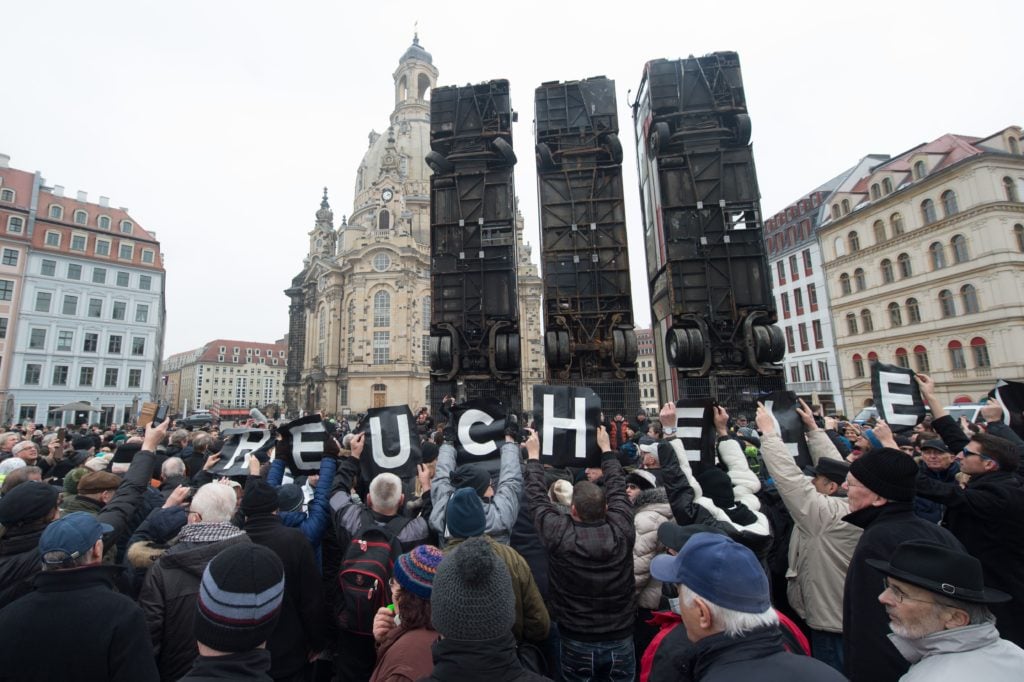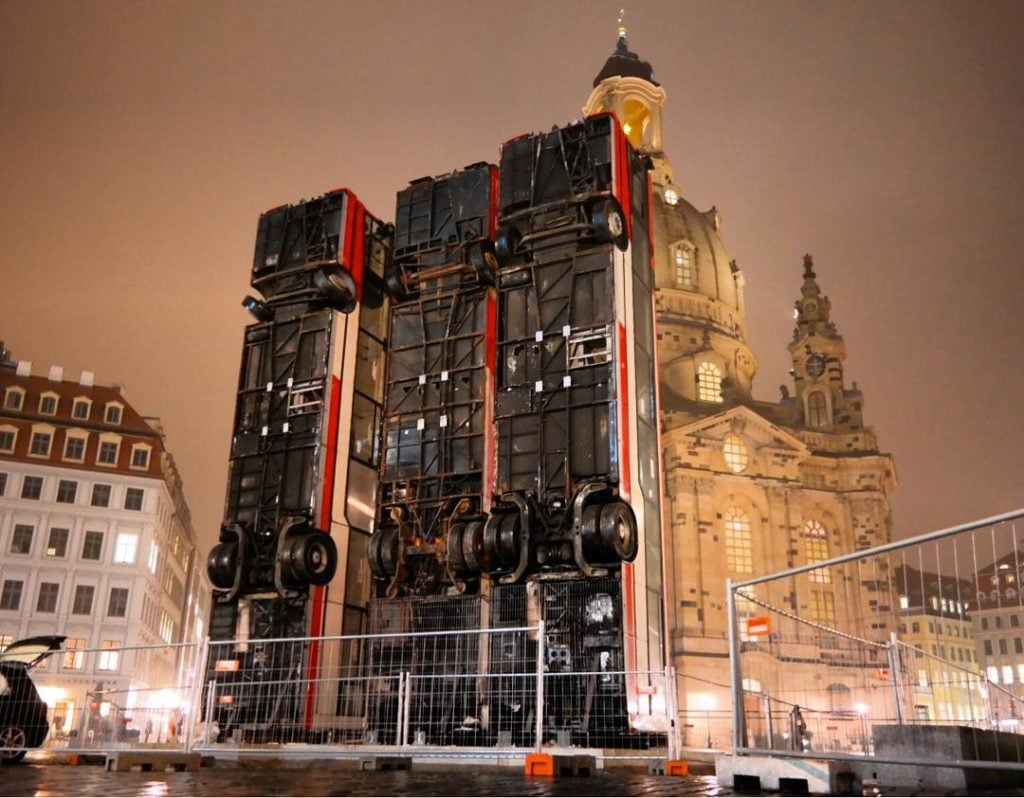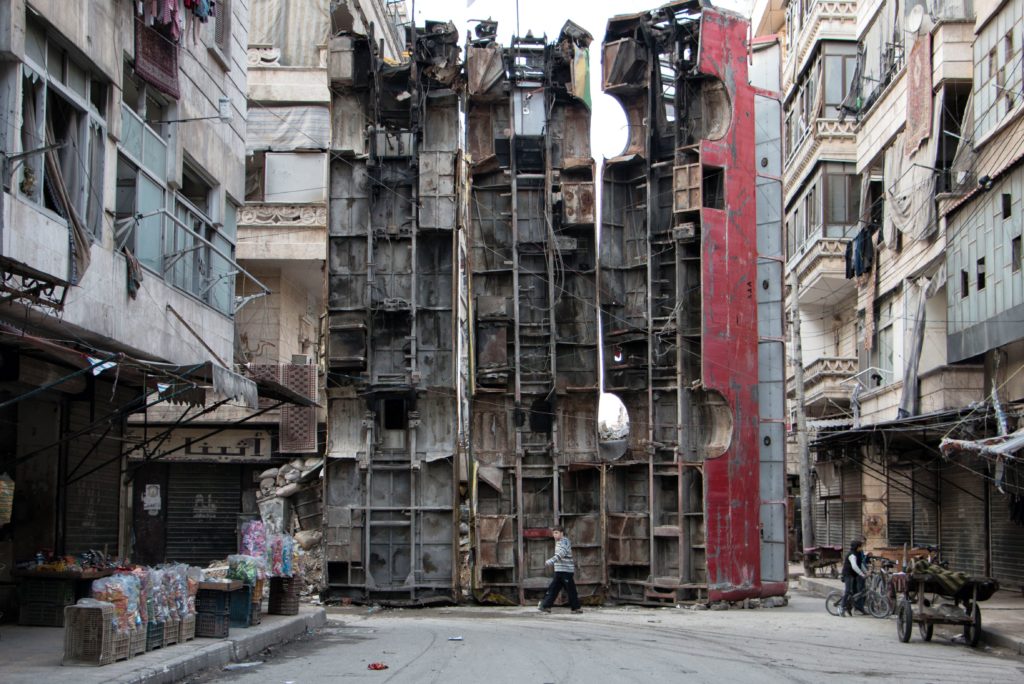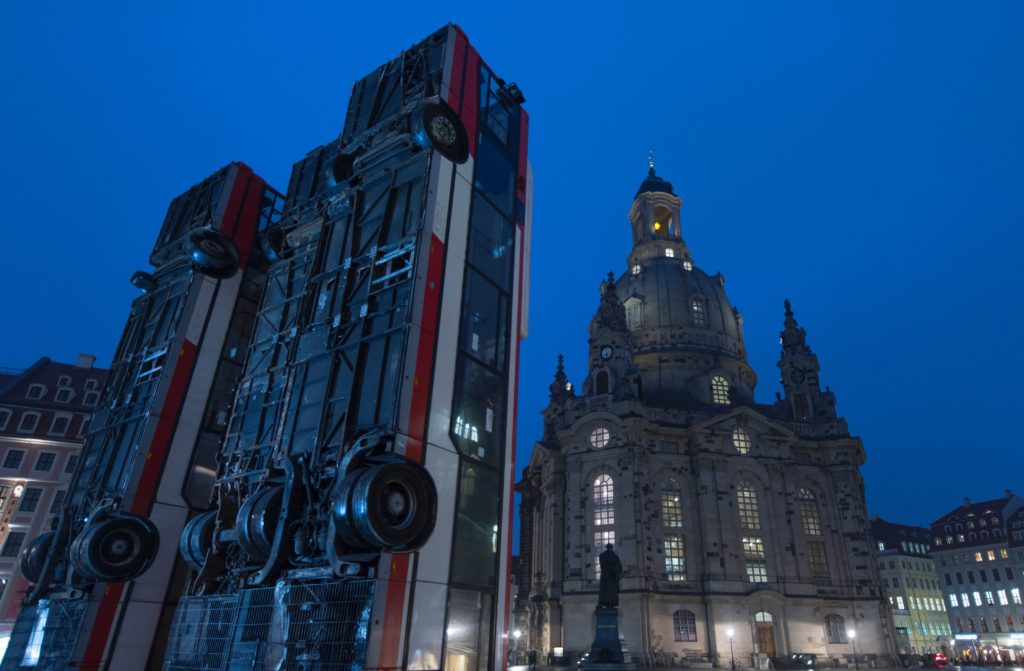Politics
Protesters Target Opening of Syrian-German Artist’s Installation
The sculpture is inspired by a barricade of buses erected in Aleppo to protect civilians.

The sculpture is inspired by a barricade of buses erected in Aleppo to protect civilians.

Sarah Cascone

When artist Manaf Halbouni installed a monumental anti-war installation in Dresden, Germany, he likely didn’t expect protesters at the February 7 unveiling.
About 150 members of the anti-Islamic group Patriotic Europeans Against the Islamisation of the West (PEGIDA), gathered in front of the three buses turned on their heads, which references a makeshift barricade erected in 2015 from upturned buses in Aleppo, reports German broadcaster Deutsche Welle.
Although the Syrian-German artist told Agence-France Presse that the piece, titled Monument, symbolized “peace, freedom and humanity,” and is meant to function as “a modern Statue of Liberty,” protesters reportedly heckled the work during the opening, crying “shame! shame!”

Manaf Halbouni, Monument. Courtesy of Manaf Halbouni, via Instagram.
Germany’s right-wing populist party Alternative für Deutschland (AfD) released a statement, according to the Guardian, calling the artwork an “abuse of artistic freedom” that amounts to nothing more than “scrap metal” and meant to “snub the citizens of Dresden.”
Mayor Dirk Hilbert alluded to the protests in his speech, warning that “the right-wing populists, who are gaining popularity not only in our city, but all over Europe, want us to forget the past.”
The statue was erected to mark the anniversary of the Allied aerial bombing of Dresden during World War II, which killed some 25,000 people in February 1945.

A young boy walks past a makeshift barricade made of wreckages of buses to obstruct the view of regime snipers and to keep people safe, on March 14, 2015 in the rebel-held side of the northern Syrian city of Aleppo. Photo Karam al-Masri/AFP/Getty Images.
The artwork was placed outside the Frauenkirche church, which was destroyed during the firebombing had to be rebuilt following German reunification.
In a statement, the Dresden Kunsthaus, which organized the exhibition, said that the piece creates “a connection between the people of the Middle East and Europe and our shared destinies” and alludes to “the suffering and unspeakable losses as well as the hope for reconstruction and peace.”

Manaf Halbouni, Monument in Dresden. Courtesy of Robert Michael/AFP/Getty Images.
“We have hit a nerve with this project—an important nerve,” Dresden Kunsthaus director Christiane Mennicke-Schwarz told the Art Newspaper. “It shows how important it is to focus on this subject. We have to be open to the suffering of others.”